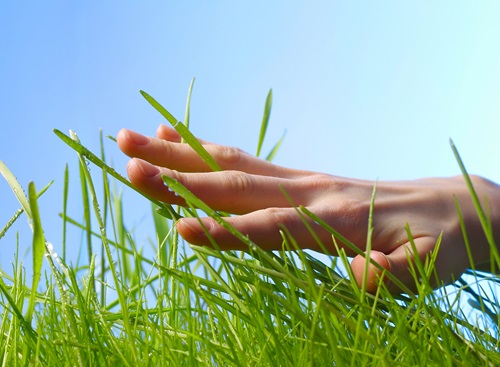
Fall is a critical time for your lawn, as it undergoes significant changes in preparation for the winter months. Understanding your lawn’s growth cycle during this season can help explain why certain lawn care practices are essential right now. By following an annual maintenance schedule that aligns with your lawn’s natural cycle, you can ensure a healthier, greener yard come spring.
Lawn Care: The Importance of Growth in the Fall
As temperatures begin to cool and daylight hours shorten, your lawn starts to shift its focus. During this time, it produces less chlorophyll and gradually slows down, preparing for winter dormancy. Although the visible growth above ground decreases, the roots continue to work hard below the surface, strengthening and storing nutrients. Therefore, fall lawn care practices are crucial for supporting this root development.
Why Fall Fertilization Matters
Although your lawn may not seem as active in fall, it still requires nutrients to sustain its roots. Fertilizing early in the fall ensures that your grass gets a final boost before going dormant. Applying a slow-release fertilizer helps your lawn build up reserves for winter, setting it up for a strong return in the spring. However, timing is key. Fertilizing too late in the season can trigger unwanted growth, which may leave your lawn vulnerable to frost damage.
Similarly, many lawn care experts in Conway SC recommend one last “dormant feeding” just before the first freeze or snowfall. This practice ensures that the nutrients will be available when your lawn reawakens in the spring, without promoting excessive growth during the colder months.
Lawn Care Includes Watering
Even though fall brings cooler weather and perhaps more rain, your lawn still needs water to support root growth. As long as your grass remains green and hasn’t fully entered dormancy, continue to water about one inch per week. This practice strengthens the root system, helping it endure the upcoming winter. In warmer climates, regular watering can also prevent the lawn from going completely dormant, keeping it lush for longer.
Adjusting Your Mowing Height
Fall is also a time to adjust your mowing practices. Raising the mowing height in early fall allows your grass to maximize its surface area for photosynthesis, which in turn nourishes the roots. As your lawn moves into dormancy, gradually lower the mowing height. Shorter grass during winter can help minimize the risk of snow mold, a common fungal disease that thrives under taller, damp grass.

lawn care in Conway SC
Managing Weeds Effectively
Fall offers a prime opportunity to manage weeds in your lawn. Just like grass, weeds focus on storing energy in their roots during this season. This makes them more susceptible to herbicides, which can be applied to target unwanted plants. For small patches of weeds, hand-pulling might be sufficient. However, for larger infestations, spot-spraying an herbicide can provide better results. Be cautious about which herbicide you choose, as some can harm specific grass varieties.
Lawn Care: Why Dethatching Matters
Thatch is a layer of dead grass, roots, and organic material eventually build up and prevents water and nutrients from reaching your lawn’s roots. Dethatching in late summer or early fall gives your lawn time to recover before winter sets in. For northern grasses, early fall is ideal for this process, while southern grasses should be dethatched in late spring. Removing thatch not only improves the overall health of your lawn in Conway SC but also reduces the likelihood of lawn diseases like red thread and pink patch.
Guarding Against Fall Lawn Diseases
During the fall, your lawn in Conway SC is susceptible to certain diseases that thrive in cool, damp conditions. Red thread and pink patch are two common problems that can develop if lawn care isn’t maintained. These diseases can overwinter in thatch and organic debris, making dethatching an essential preventive measure. Fall is also a time to watch for powdery mildew, especially in shady areas. If your lawn has been affected by mildew, consider overseeding with mildew-resistant grass varieties to mitigate the issue in the future.
Why Fall Is Perfect for Reseeding
If your lawn has become thin or patchy over the summer, fall is the perfect time to reseed with the help of Conway Lawn Care Service. Cooler temperatures and increased moisture levels create ideal conditions for new grass to take root and grow strong. Overseeding can fill in bare spots and improve the overall density of your lawn, making it more resistant to weeds and other stress factors in the spring. Choose grass varieties that suit your region and are resistant to common diseases to ensure long-term success.
By understanding your lawn’s needs during the fall, you can ensure that it remains healthy and vibrant year after year. Take action now to prepare your lawn for winter, and you’ll enjoy the rewards of a lush, green yard come spring! Call Conway Lawn Care Service now.
Conway Lawn Care Service
Conway, SC 29526
843-353-2259
http://conwaylawncareservices.com
No comments:
Post a Comment